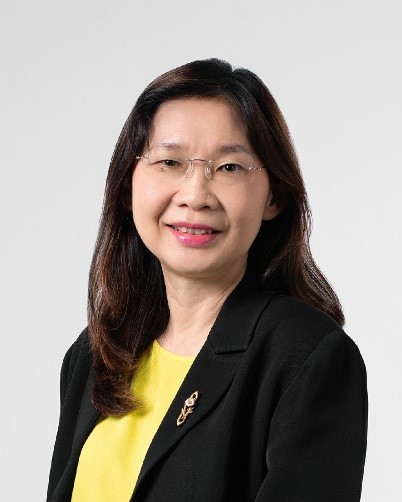If you lose your life savings to deepfake scams, will you trust AI when it becomes 500 times better in 2030?
Readers of DigiconAsia.net have seen three areas where AI can make a big contribution. With the generative-AI phenomenon sweeping across the world, there are also new opportunities for “prompt engineers”—people trained to help AI users coax the most meaningful generated content with the right series of prompts and questions.
Meanwhile, IBM has been reported to announce a head freeze on jobs that AI could be assigned to take over. Elsewhere, HR experts are predicting that 10 categories of jobs are facing redundancy or at least major revamps in scope and remuneration: teaching/educational; finance jobs (analysts, financial advisors); investment traders; graphics designers; accountants; customer service agents; marketing analysts (advertising, research and communication); paralegals and legal industry support staff; media professionals (journalists, content creators, technical writers); and certain tech jobs (analysts, software developers, engineers and coders).
According to Kumar Mitra, Managing Director and Regional General Manager, CAP, Lenovo ISG: “AI, an integral part of our lives, has revolutionized industries and transformed the way we live, work, and connect,” believing that AI should be democratized to “unlock its full potential in solving humanity’s greatest challenges.”
His employers are investing US$1bn to ensure inclusivity and ensuring widespread access to AI to individuals and communities to build “an intelligence-driven future.”
Was ChatGPT the catalyst?
Attempts at popularizing AI have been around since the 70s, when the technology was used to beat or equal backgammon and chess champions in well-publicized events. In the absence of government funding and hype, AI research still managed to thrive.
In 1997, even world chess champion Gary Kasparov was defeated by a computer program running on a supercomputer. However, despite making inroads in academic supercomputer environments, AI had hitherto not been accessible to ordinary people for ordinary tasks — until a year ago.
Now, even a 15-year old student can access the democratized power of generative AI — in the form of ChatGPT.

Said Lim Hsin Yin, Managing Director, SAS Institute (Singapore): “AI is now being democratized through ChatGPT and it has marked a major milestone in innovation. (However) it is also imperative to look at the other side of the coin. While generative AI can provide a competitive edge, improve productivity and increase efficiency, organizations should also take heed of the potential risks before investing in AI technology or solutions. Organizations should start with (building corporate) values to establish an effective strategy, such as the responsible use of AI.”
Lim, who is also a council member of a tech trade association in Singapore, proposes that organizations “look at a model based on the principles of human-centricity, transparency, robustness, privacy and security, inclusivity and accountability as a starting point for responsible usage of generative AI.”
Her vision for the organization is to focus on responsible innovation, to ensure trustworthy and ethical AI is embedded in its AI strategy and platform. With the potential threat behind hyper-advanced AI hinging on the ego and hubris of humankind, it will take people with humility and foresight to monitor and counter invisible mistakes and blind spots made on the path of navigating disruptive AI.
AI as a double-edged tool
Some experts justifiably name the same advanced AI as the solution that can be used to keep the technology and industry in check. Fight AI with AI, they say.
Where AI/ML-driven cybersecurity solutions were already being used to take corporate cyber defense to new levels of control and observability, the coming of age of generative AI is set to empower both the black hats and white hats in the cyber landscape.
Said Ramprakash Ramamoorthy, Director of AI Research, ManageEngine and Zoho:

“Through AI and ML, organizations can now identify aberrant behavior and maintain a secure environment. AI enables a proactive approach to threat response by detecting deviations in tracked metrics and consistently monitoring entity actions to detect threats at an initial stage,” while cautioning enterprises that they “must remain equally cautious. The same transformative cybersecurity capabilities that make AI indispensable to enterprises can also be exploited by threat actors. It is crucial for organizations in the region to make appropriate technology investments and policy decisions proactively.”
Ramamoorthy noted that, as AI adoption is reaching a tipping point, “collaboration is of utmost importance within the cybersecurity community. Researchers, professionals, enterprises, and policymakers in South East Asia, should work in tandem to strengthen the collective security posture.
As AI is unleashing at a faster pace, organizations need to keep up with the latest advancements, best practices, and potential risks associated with AI to effectively harness its power while mitigating vulnerabilities.”
Are their provisos enough?
Amid the pros (“we must appreciate the life-changing benefits!”) and cons (“we have to eliminate the incalculable, invisible looming threats”) of having sufficiently advanced AI disrupt, improve, threaten and/or reshape the world, what will humanity really see in 2030 and beyond?
In just a short seven years, with humans according token caution to AI development and application (and of course, abuse for geo-political and economic agendas), will AI already prove itself to be a zero-sum or even a negative sum invention?
Readers may wrongly assume that we can just sit back and watch while things unfold, because we are mostly powerless to change the minds of technocrats, mega corporations and governments.
In reality, by just provoking continual discussion on the journey ahead, we can achieve much in shaping how the collective consciousness and will of global like-minded activists can be brought to bear on even the most powerful and unbending change agents.
